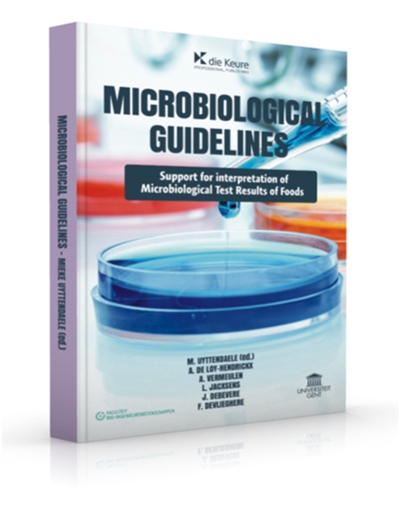en savoir plus

Carte fidélité
Permet à tous ses détenteurs d'obtenir 5% de réduction sur tous les livres lors du retrait en magasin (réduction non cumulable avec les réductions de type étudiant).
Offre également un certain nombre d'avantages auprès de nos partenaires.
Wishlist
Avec les favoris, retrouvez dans un espace les sélections effectuées au fur et à mesure de vos navigations dans le site.
Constituez pour votre usage personnel vos listes de livres en prévisions d'achats futurs et votre sélection d'articles, dossiers, événements, vidéos ou podcasts préférés ou à découvrir plus tard...
Il suffit simplement de cliquer sur "Ajout Favori" sur chaque page qui vous intéresse pour les retrouver ensuite dans votre espace personnel.
Requiert un compte Mollat
Mes Alertes
Requiert un compte Mollat
Microbiological guidelines : support for interpretation of microbiological test results of foods
en savoir plus
Résumé
Un guide pour interpréter les résultats des tests microbiologiques sur les aliments à l'aune des critères légaux en vigueur dans l'Union européenne. ©Electre 2025
Lire la Quatrième de couverture
Réduire la Quatrième de couverture
Microbiological guidelines
Support for interpretation of Microbiological Test Results of Foods
Food should be tasty, healthy, sustainable and preferably not too expensive. But food should also be safe and with sufficient guarantees on maintaining good quality aspects until the end of shelf life. The various actors in the food supply chain have an interest in verifying the expected quality and safety by means of microbiological analyses of food. Measurement brings knowledge and microbiological guidelines help in the decision-making process for judging the acceptability of food or food production processes. The present handbook provides microbiological guidelines and current applicable EU legal criteria (status 1.1.2018) for a wide range of food categories (dairy, meat, seafoods, plant-based foods, bakery products, composite foods, shelf-stable food, water) and subcategories therein, based upon the type of food processing and intrinsic characteristics of the foods. This book can be consulted to provide quick answers on the expected microbiological contamination of foodstuff. It can help in interpretation of test results in assessing good (hygienic) practices in the production of food, determining the shelf life and ensuring food safety. The handbook also presents definitions of the wide variety of foodstuffs available and some reflections on, in particular, food safety issues or the on-going debate for some food items in assessing microbial quality. Furthermore, dedicated chapters deal with basic information on the various microbial parameters useful in testing of foods, sampling is discussed, and the set-up of challenge testing as a tool to assess food safety is elaborated upon.
The main author, Prof. Mieke Uyttendaele, leads, together with Prof. Frank Devlieghere, the Food Microbiology and Food Preservation Research Group (FMFP-UGent) at Ghent University, Belgium. Her teaching and research area covers aspects of microbiological analysis of foods, food safety and food hygiene. She has built over twenty years of experience by executing, initiating and coordinating various projects in this research discipline dealing with sampling and testing to collect baseline data on the microbial contamination of foods, looking into the virulence of food-borne pathogens, elaborating challenge testing to study the behavior of food-borne pathogens. All this information serves as an input for quality assurance and microbial risk assessment to support food safety decision-making and setting microbiological criteria. She was/is the promotor of more than 25 Ph.D students (including EU and non-EU citizens). Throughout her career, Prof. Uyttendaele has published more than 270 peer reviewed scientific papers, authored several book chapters and presented at numerous international Conferences/Workshops. Throughout the years she has also used her scientific expertise in interpretation of test results for analyses obtained in routine monitoring or analysis executed at the food service lab at FMFP-UGent.
Fiche Technique
Paru le : 11/10/2018
Thématique : Grands thèmes droit public
Auteur(s) : Non précisé.
Éditeur(s) :
la Charte
Collection(s) : Non précisé.
Contributeur(s) : Editeur scientifique (ou intellectuel) : Mieke Uyttendaele
Série(s) : Non précisé.
ISBN : 978-2-87403-503-6
EAN13 : 9782874035036
Reliure : Broché
Pages : 463
Hauteur: 24.0 cm / Largeur 16.0 cm
Épaisseur: 3.1 cm
Poids: 852 g
